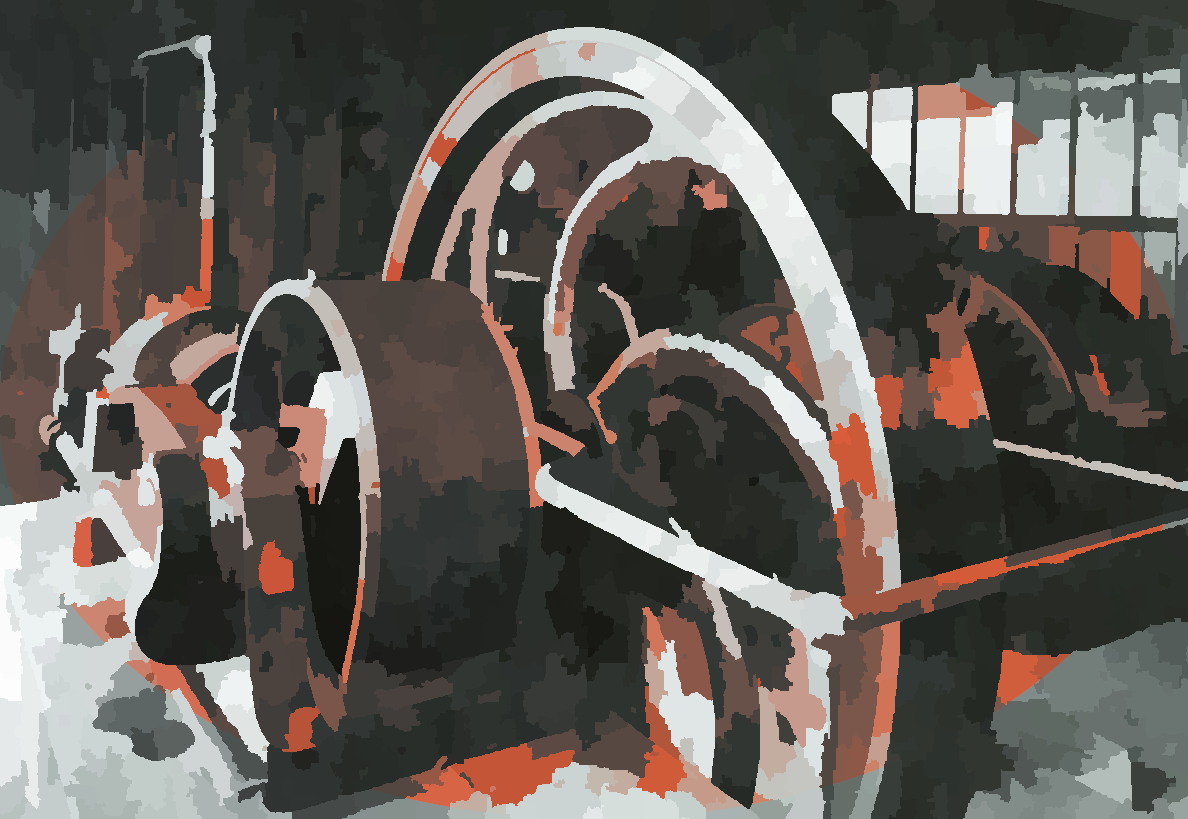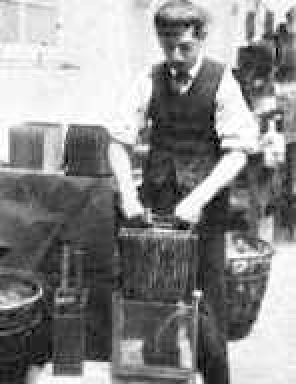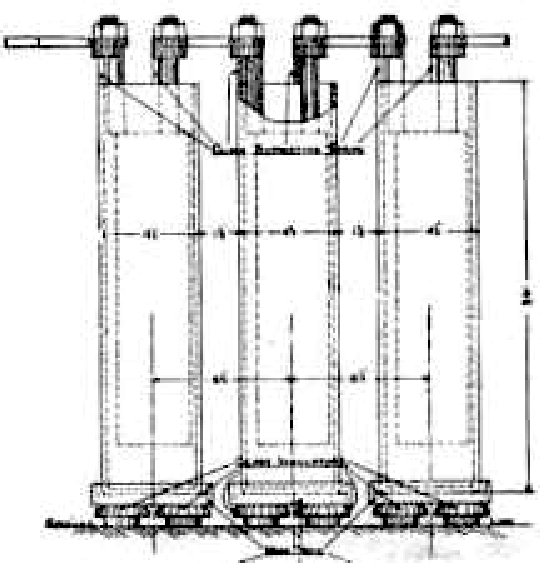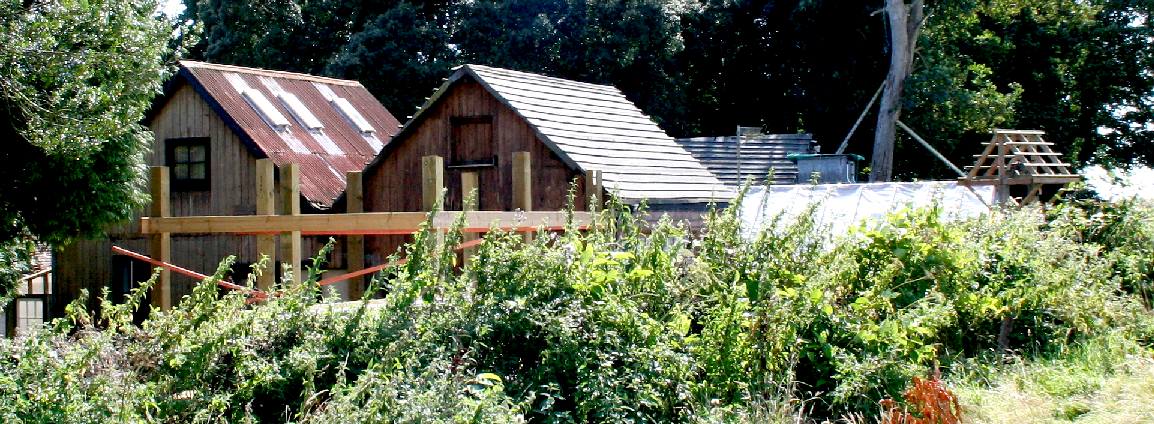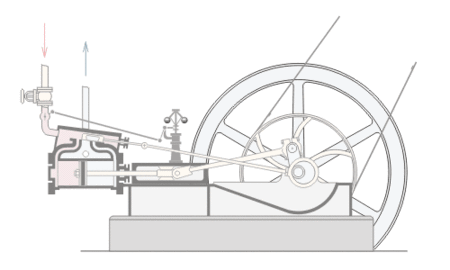|
BATTERY ENERGY STORAGE |
1ST FIRST |
||||||||||||||||||||||||||||||||||||||||||||||||||||||||||||
|
EXHIBITS FRIENDS HERITAGE HOME LIME PARK OPEN DAYS PARKING TECHNOLOGY UNESCO |
|||||||||||||||||||||||||||||||||||||||||||||||||||||||||||||
|
Thousands of years ago man knew about electricity, but not enough to do anything positive with the curiosity. It would not be until electricity could be applied to lighting, that it would become commercially important, and traded, just as oil lamps made whalers rich from whale-oil, consigning candles to the emergency cupboard. Gas lamps too would be displaced, where electric lighting was safer and brighter. Then came Light Emitting Diodes (LEDs), solar panels and wind turbines.
BATTERY HISTORY
In 1801 Alessandro Volta invented his ‘Pile,’ a series of copper and zinc discs interleaved with moist cloth, to form an electric battery. Volta’s ‘Pile’ was a Primary Cell. A primary cell is one where the metals are used up in a chemical exchange, which releases energy – generally they cannot be recharged. They have to be replaced.
A secondary cell, uses a chemical reaction which is reversible. By putting electricity into a secondary cell at a higher voltage, the cell can store energy chemically, which can later be drawn out when needed. Secondary cells were called accumulators in the early days, because they accumulated a charge. The Lead-Acid cell is one of the most common accumulators or batteries generating just over two volts per cell, hence there are six cells in series in a twelve volt car battery. The term battery is now common for any cell, but in fact it denotes a number of cells joined in series to form one unit, after the batteries of artillery units formed of a number of cannons.
In 1859, Gaston Planté invented the lead–acid battery, the first-ever battery that could be recharged by passing a reverse current through it. A lead-acid cell consists of a lead anode and a lead dioxide cathode immersed in sulfuric acid. Both electrodes react with the acid to produce lead sulfate, but the reaction at the lead anode releases electrons whilst the reaction at the lead dioxide consumes them, thus producing a current. These chemical reactions can be reversed by passing a reverse current through the battery, thereby recharging it.
In
2023 we are at the start of the transition to zero emission electric
vehicles, which has seen the development of lithium based batteries
on a large scale. This had made it possible to install giant energy
banks all over Europe, one of the biggest up to 2022, being in
Yorkshire.
Early lead-acid batteries were serviceable, the reason why Shed Three had an internal drain built in, to allow washing down the floor to remove any spilt sulfuric acid.
Even by modern standards, the development of accumulators between 1888 and 1919 had produced a large number of designs, as manufacturers competed to supply cells that were easy to maintain and could offer cost effective operation.
The
generating works at Herstmonceux was unusual in that the battery store,
comprising of about one third of the industrial complex, large enough to
power the whole village. And that is the difference, between private and
public supply; the size of the installation, proportional to the demand.
Diagram revealing glass cup supports
Modern batteries can be very much larger that Volta's Pile, typically made of lithium, cobalt, and polymers. These batteries not only power EVs, but also store electrical energy in bulk, to stabilise the National Grid, to provide load levelling, just like at the Generating Works at Herstmonceux. The municipal works at Herstmonceux is thought to be the world's first stabilized municipal supply, and the only example remaining, anywhere in the world, as a cultural and education resource, of man and technological innovation in action.
A hive of local activity, in the Sussex backwater of Herstmonceux. The driver from all of this was electric lighting, to replace candles and gas lighting.
The machinery at Herstmonceux Generating Works was gas powered in its final guise. The gas coming from heating coal. Hence, the sizeable brick built bunker, convenient to shed number three, adjacent to where the (town) gas maker plant was installed. The complex is interesting because it not only generated electricity, but stored it in Shed number One, a room filled with rows of large glass lead-acid batteries on wooden frames, balanced on small glass cups, or bowls. The battery store had sufficient capacity to provide electric lighting and cooking to the whole village overnight, by 1913.
Only now, in the last couple of years, have utilities realised that they need battery storage to stabilise the National Grid. There is now a move to install load levelling banks in the UK and in Europe, with one such installation just a few miles from Herstmonceux, at Ninfield.
EUROPEAN ASSOCIATION FOR STORAGE OF ENERGY (EASE)
Energy storage is an essential enabler of the energy transition. In the past decades, Europe has shifted from an energy system dominated by centralised
fossil fuel generation that can be dispatched to match energy consumption at all times, to a system with more and more renewables, seeking to meet their Green Deal objectives.
European Association for Storage of Energy
EU'S INDUSTRY RESEARCH & ENERGY TECHNOLOGY COMMITTEE (ITRE)
On
the 19th of July 2023, the European Parliament, through its ITRE (Industry Research & Energy) Committee, backed a deal to support non-fossil flexibility and energy storage, ahead of trilogue negotiations on
Electricity Market Design.
CHAPTERS
If you know of any information that may help us complete this story, please get in touch.
|
|||||||||||||||||||||||||||||||||||||||||||||||||||||||||||||
|
|
|||||||||||||||||||||||||||||||||||||||||||||||||||||||||||||
|
EXHIBITS FRIENDS HERITAGE HOME LIME PARK OPEN DAYS PARKING TECHNOLOGY UNESCO
Copyright © 2023 Lime Park Heritage Trust. A not for profit organisation with charitable objects.
|
|||||||||||||||||||||||||||||||||||||||||||||||||||||||||||||
